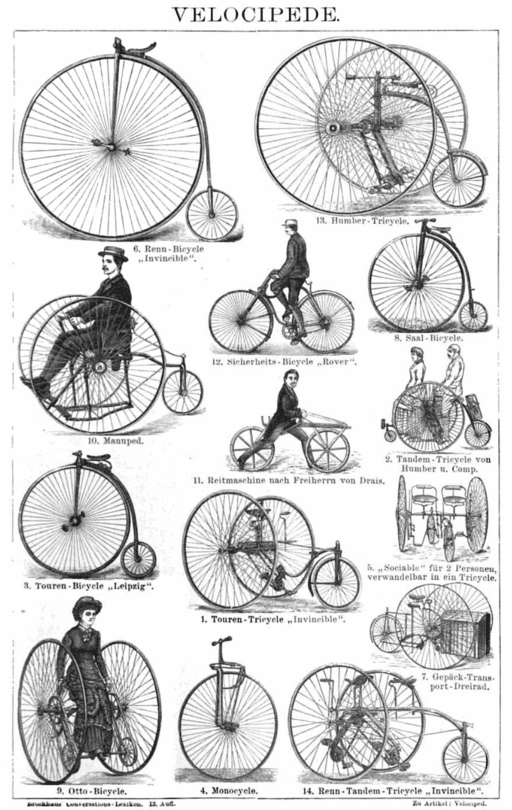[This is one of a group of evergreen articles that we often update and republish. It was originally published in December of last year]
We’ve been heavily using Georgia Historic Newspapers to put together articles about the history of Cobb County and its surrounding areas.
This morning I sat at my desk and decided to do a search on the words “bicycle” and “velocipede” to see what I could find out about how the local press covered the rise of the bicycle in the late 19th and early 20th Century.
The earliest reference was to the velocipede, the early version of the bicycle that usually had the pedals directly connected to the front axle. Velocipedes ranged from similarity to modern bicycles, to bizarre contraptions.

The article about velocipedes was a reprint in an 1868 issue of the Atlanta Intelligencer originally published in the Baltimore Gazette. It was a account of the mania for velocipedes in Paris. You can find the article at this link.
I ran across one gem from the October 20, 1881 Marietta Journal (one of the earlier names of what became the current Marietta Daily Journal).
It boasted about the acceptance of bicycles in Marietta compared to Atlanta.

“Out people are catching the bicycle fever,” the Atlanta Photograph wrote. The Marietta Journal responded “Behind again. Marietta has had it all summer. Our boys are the best riders in the country.”
One of the most interesting articles was from a 19th-century Atlanta newspaper called The Sunny South.
In its August 31, 1895 edition a question/answer column had the following item:
A Subscriber, Charleston, S. C., asks: “Has the bicycle come to stay?”
Answer: To all appearances, yes.
The sales of wheels this year are estimated at half a million, and the whole number in use at one million. The bicycle is the result and successor of the velocipede of 25 years ago. When it was shown that men could ride with ease upon two wheels, the world was astonished at the long postponement of the discovery.
The bike with a low and a high wheel was called a wonder and a thing of beauty, but it shrunk like an uprooted vine before the machine with wheels of equal size.
The bicycle is doubtless almost as perfect now as it can be made, and its introduction has sensibly affected modern life at many points.
It is creating a general demand for good roads—a most extraordinary and long-needed reform. It has so lessened the use of horses as to affect their price, the price of grain, and the earnings of local railways. It is tempting women to take a step in the direction of riding astride and will make them more independent in their actions, more muscular, and more healthy.
It is becoming a favorite mode of exercise and pleasure. The war powers of the world are taking it up, and invasions will be made on wheels.
The idle and luxurious classes of all civilized countries are using the wheel and thus making it the fashion for both sexes. It is “the thing” with both foreign and American aristocracy. Whiskey and tobacco dealers complain that their customers are buying “wheels” on installments, and their trade is being hurt by the saving. So it looks very much like the bicycle has come to stay.
Georgia Historic Newspapers
Reading old newspapers has always been an interest of mine, and with the development of the Georgia Historic Newspapers website I’ve been like a kid in a candy store.
Georgia Historic Newspapers is part of the GALILEO project, and is housed at the University of Georgia.
The project team finds and scans copies of Georgia newspapers, and now includes newspapers from the 18th century through the present. [Correction: an earlier version of this article read “from the 17th Century.” The earliest newspaper is from 1765 in the 18th Century]
They digitize the papers into PDF copies and run Optical Character Recognition (OCR) on them so that they are searchable and available in text format (although the text renderings are not perfect).
